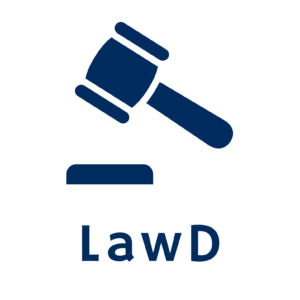Introduction
This report presents the findings from our 2024 LawD Membership Survey conducted among 96 members of the ATA Law Division. The survey aimed to gather comprehensive insights into the services offered by legal translators and interpreters, their areas of specialization, working languages, technology utilization, and their interest in professional development. The responses provide valuable data that can inform our understanding of current trends and needs within the legal translation and interpreting community. Below, we summarize the key findings from the survey.
1. Service Offerings:
- Translation remains the most common service provided by participants, with 93.75% offering this.
- Editing, reviewing, and proofreading are also significant at 52.08%.
- Interpreting services, both non-court (48.96%) and court interpreting (41.67%), are also widely offered.
2. Legal Translation/Interpreting as a Field:
- Almost half of the participants consider legal translation/interpreting as one of their working fields (46.88%), while 45.83% view it as their specialty. Only 7.29% see it as an area of interest rather than a core part of their work.
3. Working Languages:
- The dominant working language is English (82.29%), followed by Spanish (43.75%), French (26.04%), and German (14.58%). Other languages such as Mandarin, Italian, and Russian are also represented, though in smaller percentages. A variety of other languages, including less common ones like Bosnian and Cantonese, were mentioned.
4. Experience:
- A significant majority (71.58%) of respondents have over 15 years of experience in the field. Only a small percentage (5.26%) have between 1–5 years of experience, indicating a highly experienced pool of professionals.
5. Use of Technology:
- 43.75% of respondents use SDL Trados, followed by MemoQ (26.04%), and Wordfast (14.58%). While 28.13% do not use CAT tools, there is a diverse range of software adoption among participants.
- Regarding machine translation (MT) and AI tools, 46.67% do not use such technologies, while DeepL (42.22%) and ChatGPT (22.22%) are the most frequently used among those who do.
6. Client Base:
- Most participants work for direct clients outside of law firms (76.04%), followed closely by direct clients from law firms (68.75%) and agencies (68.75%).
7. ATA Conference Attendance:
- Only 14.74% of respondents attend the ATA Annual Conference every year, while 28.42% attend every 3–5 years. Notably, 48.42% either hardly ever or never attend the conference, pointing to potential barriers to participation.
8. Supplementing Income:
- The majority (57.89%) of participants do not need to supplement their income outside of translation/interpreting, while 42.11% do.
9. Interest in Professional Development:
- If the ATA Law Division were to offer virtual working groups on marketing to legal clients, nearly half (47.92%) would attend, and another 45.83% are open to considering it. Areas of interest for marketing development include attending real-life events with potential clients (50.00%) and running email campaigns (46.43%).
10. Webinar and Legal Topic Interests:
-
- The most sought-after webinar topics include AI in legal translation/interpreting (47.73%), common law vs civil law systems (44.32%), and legal terminology (43.18%).
- Language-specific webinars with the highest demand are for into English (43.68%) and Spanish (42.53%).
- Top topics (by percentage of respondents that selected this option):
-
-
- AI in legal translation/interpreting 47.73%
-
-
-
- Common law vs Civil Law systems 44.32%
-
-
-
- Contracts 43.18%
-
-
-
- Legal terminology 43.18%
-
-
-
- Finding & working with direct clients in the legal sector 42.05%
-
-
-
- Working with lawyers & law firms 42.05%
-
-
-
- Immigration 34.09%
-
-
-
- International law 31.82%
-
-
-
- Family and inheritance law 30.68%
-
-
- Additional topics of interest:
-
-
- Comparative Law 29.55%
-
-
-
- Legal writing 29.55%
-
-
-
- Civil procedure 27.27%
-
-
-
- Corporate law 27.27%
-
-
-
- Criminal law/Criminal procedure 26.14%
-
-
-
- Deposition interpreting 26.14%
-
-
-
- Forensic linguistics 26.14%
-
-
-
- Plain English 26.14%
-
-
-
- Environmental law 25.00%
-
-
-
- Human rights law 25.00%
-
-
-
- Medical/legal issues 25.00%
-
-
-
- Court interpreting 22.73%
-
-
-
- Arbitration/Mediation/Alternative Dispute Resolution 21.59%
-
-
-
- Money laundering and antitrust 21.59%
-
Conclusion:
The 2024 LawD Membership Survey offers valuable insights into the legal translation and interpreting profession. It shows a strong focus on translation services and a highly experienced membership. English, Spanish, and French dominate, highlighting the multilingual nature of the field.
The survey also reveals a strong interest in professional development, especially in marketing and technology, creating exciting opportunities for growth. To support these needs, the Law Division plans to offer targeted webinars, training sessions, and networking events to help members connect, learn, and thrive.

Leave a Reply